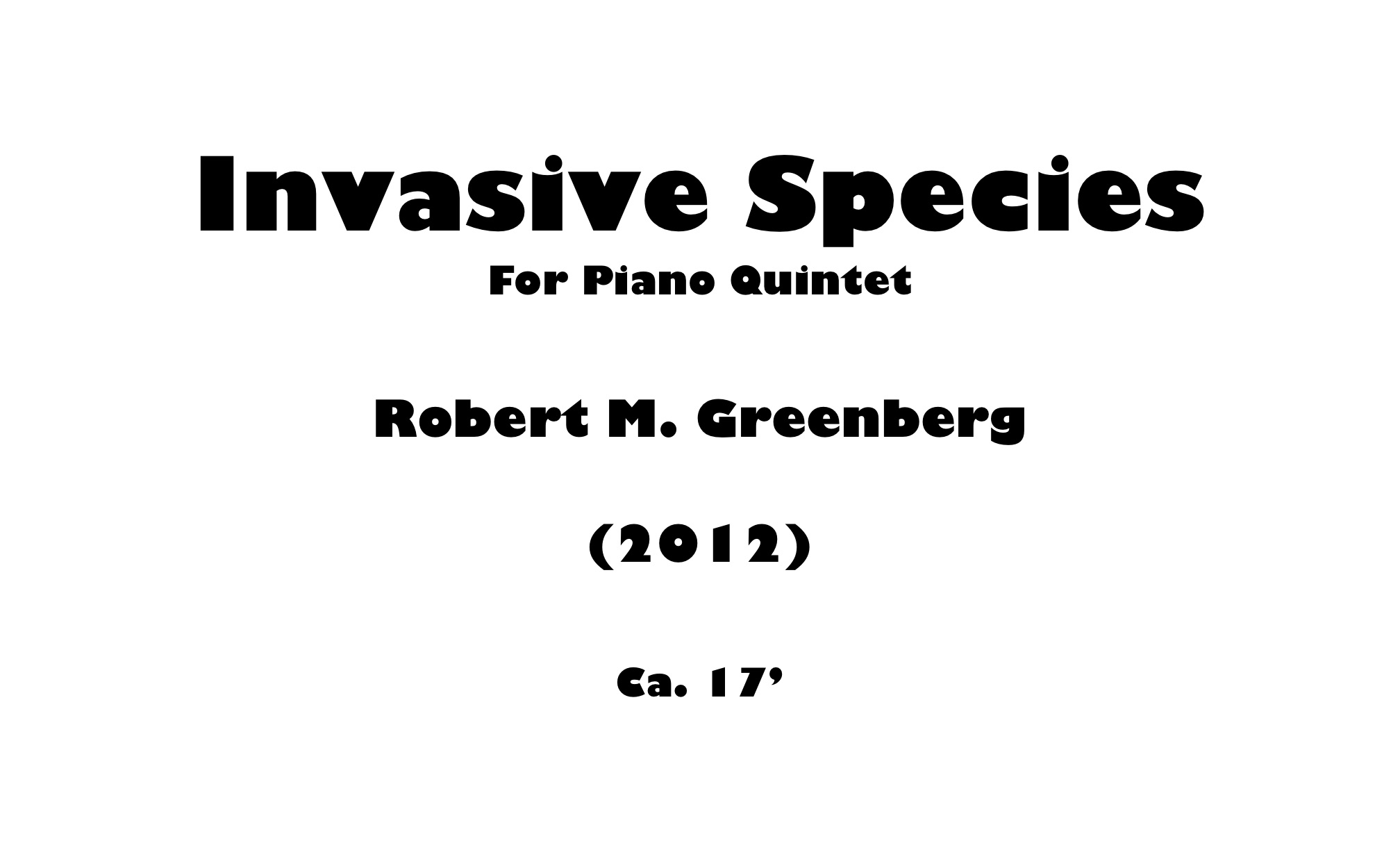The Details
For Piano Quintet
- Three-Part Intention
- March of the Yellow Crazy Ants
- One-Part Incursion
- Pretty Pretty Poison
- Two-Part Ignition
- E. globules (10-20-1991)
(2012) (ca. 15’)
The title Invasive Species refers to non-native species of plants and animals that, once introduced to a new environment, have an adverse affect on the habitats and bioregions they invade and colonize.
Specifically this piece is about three “invasive species”: yellow crazy ants (“March of the Yellow Crazy Ants”), water hyacinths (“Pretty Pretty Poison”), and gum eucalyptus (“E. globulus”). Generally, the piece is about confrontations between like and unlike elements, as depicted – in particular – by the confrontation between the piano and the string quartet.
The yellow crazy ant (Anoplolepis gracilipes) most likely originated in West Africa. Accidentally introduced to northern Australia, it has devastated the local ecology. The ant is called “crazy” because of its unpredictable movements as well as its long legs and antennae that render it most definitely goofy. Goofy this movement is as well. It starts out quietly but ultimately it occupies all the registral space available, from top to bottom, a strained (but well-intended) metaphor for the ant’s invasive domination of its bio-niche.
The common water hyacinth (Eichhornia crassipes) is a free-floating aquatic plant native to South America. Characterized by beautiful, lavender-to-pink, six-petaled flowers, the water hyacinth has invaded and colonized large areas throughout North America, Asia, Australia, and Africa, where it starves bodies of water of oxygen, killing off native species while choking entire ecosystems with its bulk. This movement is two movements in one: a fast movement and a slow movement. In the first part, the strings portray a lively, oxygenated, watery environment (“pretty”) that is slowly strangled by the emergence of the piano. The second part of the movement consists of a lush chorale for the piano (“pretty poison”), a chorale that nevertheless chokes off the unfortunate strings.
“E. globulus” refers to the Blue Gum Eucalyptus (Eucalyptus globulus), an incredibly fast-growing tree native to Australia. Blue Gum Eucalyptus trees were planted in huge number in the San Francisco Bay Area during the nineteenth century in the erroneous belief that they would supply timber when mature. It was a major eco-blunder. As it turns out, the hard, oily Eucalyptus wood makes poor lumber but extraordinarily flammable tinder. The incendiary nature of these trees was made abundantly clear during the Oakland Hills Fire Storm (October 20, 1991), which spread with terrifying speed thanks, in large part, to exploding Eucalyptus trees. In a series of episodes, this movement depicts the growth, combustion, and storm of fire abetted by the Eucalyptus on 10-20-1991.
Three brief introductory movements precede each of the “invasive species”: “Three-Part Intention”, “One-Part Incursion”, and “Two-Part Ignition”. The titular references to Bach were made irresistible by the superb recording of Bach’s Well-Tempered Clavier made by pianist Roger Woodward, who is one of the dedicatees of the piece. Indeed, Woodward’s piano might well be considered the invasive element among the stringed instruments of his fellow dedicatees in the Alexander String Quartet.
Invasive Species is dedicated – with love and respect – to Roger Woodward and the Alexander String Quartet on the occasion of the ASQ’s thirtieth anniversary.





